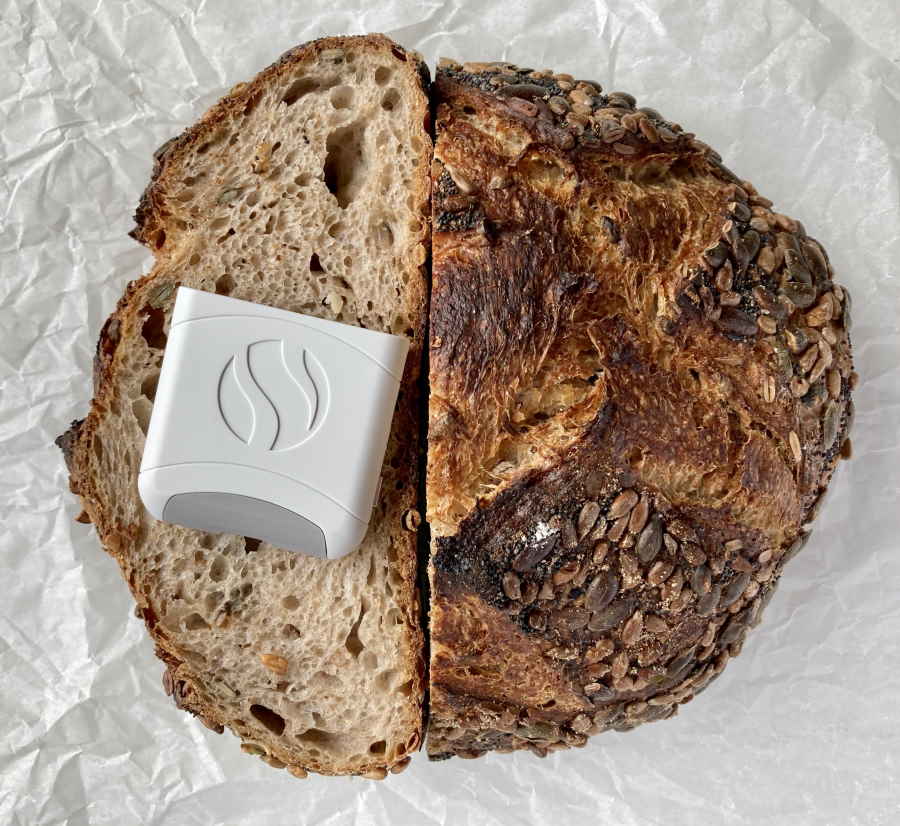
We know that diet plays a key role in provoking IBS symptoms. A majority of people diagnosed with IBS report discomfort soon after eating. Many of those cite bread as one of the leading culprits. This leads to a lot of people completely eliminating bread and certain wholegrain foods from their diets. This is problematic because whole grains are among the most nutritious foods available. In this post we’d like to explore why bread can provoke these symptoms and how the ancient art of sourdough fermentation may provide a way of enjoying some of that whole grain goodness, without the downside!
We know that diet plays a key role in provoking IBS symptoms. A majority of people diagnosed with IBS report discomfort soon after eating. Many of those cite bread as one of the leading culprits. This leads to a lot of people completely eliminating bread and certain wholegrain foods from their diets. This is problematic because whole grains are among the most nutritious foods available. In this post we’d like to explore why bread can provoke these symptoms and how the ancient art of sourdough fermentation may provide a way of enjoying some of that whole grain goodness, without the downside!
Grains commonly used to make bread, such as wheat and rye, contain a variety of suspects when it comes to triggering gastrointestinal symptoms. Amylase-trypsin inhibitors and wheat-germ lectin are proteins that even in small concentrations can induce intestinal inflammation. Better known is gluten, which is actually a collective term for hundreds of storage proteins found in the germ of wheat, rye, and barley. As well as triggering an immune response in people with coeliac disease, gluten may also induce low-grade intestinal inflammation in people with IBS.
The leading candidates, however, are fructans. Fructans are fructose polymers found mainly in the outer bran layer of cereal grains. They are a type of FODMAP (something we know all about at FoodMarble!) and to find out why they can cause unwelcome symptoms check out some of our previous blog posts.
Not necessarily. While all of these components are found in unprocessed whole grains, the amount in the bread we eat depends on how that bread is made. More specifically, it depends on how long the bread is fermented for.
Fermentation, in relation to bread, is the process by which carbohydrates in flour are broken down by yeasts and bacteria to produce the carbon dioxide that leavens the bread. Industrially produced bread uses short fermentation times and specific strains of yeast. The yeast partially breaks the fructans down into fructose. This incomplete fermentation can produce loaves that contain fructans and excess fructose in sufficient levels to cause symptoms.
On the other hand, sourdough fermentation takes much longer and uses a wide variety of lactic acid bacteria and wild yeasts. Did you know that sourdough starter cultures contain up to 50 different types of lactic acid bacteria and 20 different types of wild yeast?
The extra fermentation time allows the microorganisms to digest the fructans and excess fructose, resulting in bread with a much lower FODMAP content. One study showed that sourdough fermentation reduced up to 90% of the FODMAP content in wholegrain bread, and up to 77% of the FODMAP content in spelt bread. Another study showed that sourdough fermentation also reduces the amount of amylase-trypsin inhibitors (these are the inflammation causing proteins we mentioned earlier).
As an added bonus, studies have shown that sourdough fermentation makes the resulting bread more digestible and allows us to absorb more of the micronutrients found in whole grains. Did you know that sourdough’s characteristic sour flavour comes from the lactic and acetic acids produced during fermentation? Studies have shown that sourdough bread can contain up to 196 distinct flavour compounds!
Not so fast! Some studies have shown that gut microbiota from IBS patients cultured with fast-fermented breads produce more intestinal gas than microbiota cultured with long-fermented breads. Others have shown that eating sourdough bread did not reduce gastrointestinal symptoms compared to fast-fermented bread.
The type of flour used in making the bread is also important. Rye and wholegrain flours tend to have higher levels of fructans, while spelt and refined flours tend to have lower levels of fructans.
Overall you should bear in mind that sourdough fermentation is a complex process, and no two loaves are the same. While the fermentation process can reduce FODMAP levels, there is no guarantee that a particular loaf will be low FODMAP.
As sourdough is such a good (and delicious!) source of fibre and micronutrients it is worth trying small amounts of different types to see which suit you best. A great way to do this is by using your FoodMarble AIRE to do a custom food test.
FoodMarbles FODMAP Testing Kit is a great way to find the foods that are right for your body. If you are looking to find the root cause of your digestive issues check out our AIRE device and FODMAP Testing Kit.

MSc, Clinical Development Associate
Be the first to discover our latest articles, tips, and recipes
